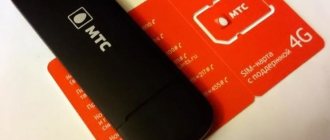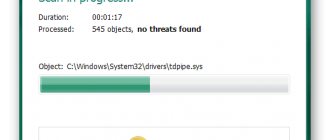The load on mobile operator networks increases every year, resulting in various communication problems. Even now in places with good signal reception it is not always possible to get through. In addition, there are many other factors that can interfere with communication. We will discuss one of these situations further. The subscriber's phone is constantly busy - what does this mean and what are the reasons? We will consider general points that apply to all operators (MTS, Beeline, Tele2, Megafon).
The subscriber's phone is constantly busy
"Black list"
The person you are calling may be using this and this is a very common reason. In this case, the person you are trying to call or who is trying to call you has been added to the “black list” either by you or by him. People sometimes block contacts by accident, sometimes they do it on purpose and then forget about it. When a subscriber is added to the black list, neither you nor he will be able to make calls, and to do this you need to check whether he is blocked or not.
If you call other contacts 1-3, and everything works fine without any problems, then open “Contacts” or the phone book, find this particular contact and go to settings. This looks different for all phones, there should be a button either “unblock contact” or “remove phone from blacklist”; in some phones you need to go to the “reject call” section and remove the number you need from there.
What does it mean that this type of communication is not available to MTS subscribers?
This type of communication is not available to the subscriber, what does this mean on MTS? Users often ask this question. Our material will discuss possible reasons for this situation.
Now many operators block the number after the balance goes into negative values. This way they encourage the client to top up their account in order to continue using mobile services.
MTS is one of the operators that actively practices phone blocking. If the balance goes into minus values, then in addition to outgoing calls, incoming calls will also be subject to restrictions. To start actively using the operator’s services again, you need to top up your account to the required value.
What does it mean that this type of communication is not available to MTS subscribers? This information demonstrates that the subscriber you are trying to reach cannot use communication services for certain reasons, which is why some restrictive measures are in place on incoming calls. You will have to contact him by another phone number or through another channel.
- The client’s balance went into negative territory, and the operator temporarily limited the use of mobile services.
- There has been a breakdown.
- The SIM card is broken.
- The subscriber independently requested temporary blocking of the number.
- It is located along with poor signal reception.
Why they say this type of communication is not available to MTS subscribers, you understand. But what to do if such a situation arises? If you cannot get through, then you should call another number, or write on social networks.
If friends or relatives cannot call you due to restrictions in the provision of services, then the first thing you need to do is check your balance. It probably went into negative values, and the operator blocked the number.
- At the nearest terminal.
- At the ATM.
- Through the Internet banking system.
- Through third party services.
- From an electronic wallet.
- From a bank card on the operator’s website.
- Contact the contact center at 0890.
- Report a problem.
- Specialists will check the functioning of the network and transfer the information to the technical service.
- The company's employees will quickly eliminate the failure that has arisen.
You may be in an area with poor network coverage, for example, in a forest, on a highway, or on the shore of a pond. After returning to the city, communication should be fully restored.
- Contact the contact center and report the problem.
- Employees will ask you to come to the nearest office for an exchange.
- Choose a suitable salon and visit it in person.
- Specialists will issue a new SIM card and copy the old number onto it.
In case of voluntary blocking, the subscriber only needs to send a request to disable it. It will appear online again within a few minutes.
We cannot exclude the possibility of simply turning off the phone. After turning on the device, the subscriber will return to the network and will again be able to receive calls from other clients.
The battery is low
Also one of the popular reasons is a low battery, when the subscriber is left without a phone because the charger has run out. There will be no beeps, but it will be said that the subscriber is outside the network coverage area or the subscriber is unavailable, but long beeps may also sound and the network will be unavailable. If this happens, there is such a system as conditional call forwarding, then if you have another phone with a different number, you can set up call forwarding so that if the person calling you cannot get through to this number, he will be automatically forwarded to another number .
Operator service
Among the offers from mobile network providers there is a large selection of similar services. They can operate at a certain time or continuously. The essence of such services is that after connection, the subscriber is not disturbed at inconvenient/non-working hours. For residents of modern megacities, work calls are a real problem that prevents them from enjoying relaxation and communication with family. Actually, that’s why it’s connected.
All telecom operators offer
It’s worth mentioning separately that many operators (MTS, Beeline, Tele2, Megafon) allow you to connect it and block the call at your level. If they can’t get through to you, then the first thing you need to do is call the operator and find out if there are any subscriptions or services that could do this.
No network
There are also rare situations when there is no network at all or mobile coverage is not strong enough, but now even in the most remote corners of the country there is mobile coverage. But the network may not be available in places near airports and other similar institutions, or in places in northern regions and destinations. Also, there may not be a network in the subway, in an elevator during air travel, and then if you have another SIM card that supports the network, when you call one SIM card you will be directed to another.
The wrong network type is set
Recently, a situation has often arisen in which incoming messages are blocked on new smartphones due to the wrong network type and poor-quality connection. For example, the phone is set to 4G priority type, but the SIM card or tower cannot handle it. In this case, playing short helps. That is, the owner of the problematic device needs to open his settings and change the pre-installed 4G (LTE, VoLTE) to 3G, and if that doesn’t help, then switch from 3G to 2G.
- Changing the network type on Android is done quite standardly: go to “Settings” → “Mobile networks” → “Network type”. Next, change the network specified there. By the way, on some devices the network type can be reconfigured in the SIM card menu.
Try lowering the quality from 4G to 3G
- In the case of an iPhone, you need to go to: “Settings” → “Cellular” → “Data Options” → “Voice & Data”. Keep in mind that instead of 4G there may be LTE or VoLTE.
Try contacting the subscriber in other ways and offer to change the network settings - it helps very often. You can contact via the now popular Viber or WhatsApp, try sending SMS, you can send instructions by e-mail.
Blocking by antivirus
It happens that the antivirus that is on the phone blocks calls and then the subscriber who calls you will hear beeps which mean that the network is busy, so it happens that in order to solve this problem you need to do some actions. If you have a Samsung and an antivirus installed from Samsung or with the name Dr.Web, then after installing the application you need to check what exactly it blocks.
And then you decide to remove it or solve the problem in some other way.
If you delete the application, then after that you need to clear the cache and it is advisable to restart the phone, then they will be completely removed from the phone and all calls: incoming and outgoing will occur as usual.
But sometimes you don't need to remove your antivirus. Then you must go to the antivirus application, and there is a “profile” section and you need to check the box “receive all calls and SMS” or this item will sound different, but have this meaning.
Special services and Blacklist on your phone
Cellular operators provide a wide range of options for blocking unwanted calls. They are designed for busy or simply peace-loving clients.
Examples of such;
The names may vary, but the essence of this phenomenon is the same. The subscriber chooses a time at which it is inconvenient for him to receive calls. For example, during lectures or office hours. Then it configures blocking at the operator level. This means that when you call, the person on the other end of the line will hear that the line is constantly busy.
In this case, the ability to receive incoming signals from all callers, and not from you personally, is blocked. To make sure that the blocking is not limited to just one phone, call back from another number. Built-in options like “Do Not Disturb” and “Airplane Mode” have similar functionality.
Airplane mode on your phone
You can receive short beeps if you have been added to the ignore list or black list. To be sure, make several calls from your phone, and then call from another number. If the signal passes only in the latter case, then you are on the black list.
For the purity of the experiment, you can repeat it several times. However, if they really don’t want to hear from you, they will add you to the blacklist as many times as necessary. If you try to communicate with a phone number that is unfamiliar to the subscriber, the new number will be remembered and also sent to the ignore list.
The process of adding to the Blacklist
If you still urgently need to contact a person, then send him an SMS, a message on social networks, or an email. You can also call via Viber, Skype, WhatsApp.
Other reasons for “network busy”
There are other reasons why your phone tells you that the network is busy:
- there may be some kind of accident or equipment failure with the mobile operator you use
- The network may simply be overloaded due to a large number of users using it.
- The situation in a particular region may also change, some tower may be disconnected
- Also, lack of frequencies may be one of the reasons. If you are in a large region, then the necessary frequencies are always in short supply there, as, for example, in Moscow. Therefore, the network may be busy.
The subscriber is constantly busy due to mobile Internet
In modern conditions, the communication channel and the data transmission line are separated. However, if you find that you cannot get through while turning on the mobile Internet, you should consult your operator on what to do. If it is possible to use a 3G channel or higher, then in the SIM card settings, specify only the desired channel. It is quite possible that this will solve the problem.
Perhaps the phone is always busy due to mobile Internet
Types of problems and their causes
Incorrect handling of calls may manifest itself in one of the following ways:
- The notification about a new call does not appear on the screen, and after the call ends, the “Missed” icon appears in the notification center. The cause of this type of error is that the voicemail function is not configured correctly. The phone automatically redirects any signal to it, so you learn about the presence of an incoming call after it is reset;
- There is no ringing or vibration during a call, but a call notification is displayed on the screen. In this case, you should check the operation of the speakers and, if necessary, replace them with new ones;
- There is no connection on the phone, even if the SIM card is inserted into the phone. The cause of the malfunction is the incorrect placement of the card in the tray or a hardware failure of the communication module.
In what cases does the answering machine turn on?
Due to the fact that the service is customizable, the subscriber himself can indicate in which cases the electronic voice is turned on.
These are all the different situations in which voicemail can be used and you can hear a message from the answering machine that the number is busy:
- The subscriber is currently in the subway, underpass or other places with a weak signal;
- At the moment, the subscriber’s phone number is busy, the person is communicating with other people;
- The phone is turned off;
- The subscriber is currently dialing someone's number.
This service is quite convenient for both parties: the caller has the opportunity to leave an urgent message, and the person being called has the opportunity to hear it. If you hear an answering machine asking you to leave a message because the number is busy, take advantage of this opportunity. It is enough to say a few words after the beep, for example, a request to call back urgently.
What can cause network congestion?
The network may also be overloaded for other reasons beyond the control of the subscriber. The simplest and most common reason is an emergency at the station or malfunction of the equipment that supports the network. As a rule, such problems are resolved very quickly and are not very noticeable to subscribers. Also in the cellular communication system there is the so-called “Network Planning” - when all the operator’s networks are built with a certain reserve. When this reserve is exceeded, some cannot get through because there is not enough reserve for them (it is not profitable for a telecom operator to expand the network for extra calls that are used very rarely, say, on New Year's Day). Also, networks are built taking into account the estimated amount of traffic, which does not provide for round-the-clock conversations of all subscribers in the network.
The cause of network overload may be a malfunction of the base station in a certain area or maintenance work. At this time, the load is transferred to another BS, and accordingly, it may not be able to cope with them. Network congestion can occur during promotions, when the operator offers temporary calls at a reduced cost. The number of calls increases sharply, and the same number of stations are installed. Another problem may be a shortage of cellular frequencies when the number of subscribers exceeds the permissible limit in permissible frequencies.
“The network is busy” - Do you know this? I think this is familiar to almost every mobile user. After all, it happens that you really need to make a call, but when the reception scale is full, it becomes impossible to do so. Why is this happening? Let's try to look at the problem through the eyes of a simple user.
What are we paying for?
Every subscriber wants to be sure that he will be able to make a call at any time, but in practice we do not always have this opportunity. You can use the chosen operator for a long time and enjoy its prices, coverage, various services and maintenance, but as soon as it turns out that we cannot make a very important call, all this fades into the background. Why do mobile networks become overloaded? There could be several explanations for this:
What are we paying for?
A busy signal indicates that the phone number you are trying to call cannot be reached because you are answering the call or because the lines are busy, making it impossible to place the call. In many telephones, the signal takes the form of a distinctive tone, but it can also be visual, as is the case with those intended for deaf people or people with some kind of disability. Many people are familiar with this sound because it is significantly different from the dial tone, which is a tone that indicates that the telephone line is open and ready for a call.
- Network planning: All cellular networks are built with only a small margin of safety. It is simply not profitable for an operator to maintain the functioning of a large network with a small number of users - it is simply unprofitable. That is why we are not able to make a call on days when the network load is higher than usual, for example, on New Year's Eve.
Any communication networks are built based on certain models of traffic generated by subscribers, and none of these models provides for a subscriber hanging on the line 24 hours a day, 365 days a year, nor does it count on “subscriber conspiracies”, when everything happens overnight They'll rush to call.
From this we can conclude that the operator constantly has to configure the network, because Over time, everything changes: tariffs become different, the number of users constantly changes, equipment upgrades occur, which are usually due! resulting in network failures. In most cases, a busy line tells us that the person we are calling is on the phone or the phone is disconnected. In some cases, the operator may be asked to terminate the call and let us know if it is for an emergency. This is more common in companies and organizations that have a central switch that manages internal telephone lines. Other times, the signal means the lines are simply not working, causing a change in the tone of the signal we hear.
This usually occurs after a natural disaster due to damaged lines and high call volume. In the previous two cases, callers must wait and continue trying to call until they are successful. People who hear a certain tone or message that all lines are busy may have to wait even an hour until the traffic peak subsides and the lines are available again. Some companies offer a redial service that will keep trying to call the phone until you connect to the phone and ring the phone to reach the people you wanted to talk to.
In any case, the busy signal is sometimes referred to as other things, since the sound of this signal is not universal throughout the world. If anyone is having trouble making a call in another country, it's a good idea to know what the different tones mean. Sometimes companies with their own telephone system have their own signals that are different from those typically used by the telephone companies. So that's another thing to keep in mind.
Can we find out if we have our phone? The truth is that there are ways to find out, and it really is very easy. Just like terrestrial networks become congested during holidays and emergencies, wireless networks become congested when many users are making calls at the same time and in the same area. A busy signal may mean that your network cannot handle the caller's request. Try waiting a few minutes and call again. If you still can't get through, turn your phone off and on again before trying to call again.
Some cell phone providers have better coverage than others, and this varies in different parts of the country. A busy signal may mean that your phone is unable to connect to the network because you are very far from the nearest cell tower. Check the links in the Resources section to learn more about coverage in your area. This information will also be provided by your service provider.
If someone receives this signal when they try to call you, check your phone's settings to make sure it is not blocked. If you get this signal when you call someone else, ask them to check their settings and unblock your number. Since every phone is different, read the instructions that came with your phone if you need help.
But the development of operators does not stand still, and there is hope that soon on New Year’s Eve we will be able to congratulate all the people close to us without any problems. Moreover, there has been some progress in the Ministry of Communications - they have stopped looking at mobile communications, as they say, “through their fingers.”
“The network is busy” - Do you know this? I think this is familiar to almost every mobile user. After all, it happens that you really need to make a call, but when the reception scale is full, it becomes impossible to do so. Why is this happening? Let's try to look at the problem through the eyes of a simple user.
Hardware or software problems
While unlikely, it's always possible that cycling your phone's power by removing the battery for three seconds while it's on will allow you to connect when power returns. If you have another provider, call them for instructions.
An out-of-time payment or other account issue may pause your service and give you a quick busy signal. If you can't make a call, check your account status on your provider's website or contact customer service on another phone to sort it out.
What are we paying for?
Every subscriber wants to be sure that he will be able to make a call at any time, but in practice we do not always have this opportunity. You can use the chosen operator for a long time and enjoy its prices, coverage, various services and maintenance, but as soon as it turns out that we cannot make a very important call, all this fades into the background. Why do mobile networks become overloaded? There could be several explanations for this:
Contribute to improved risk management in health services; Develop and support research of interest to the Brazilian healthcare system. There is a challenge among partners for institutions participating in the Network to offer in-person and distance learning facilities for ongoing learning.
Below is the network technology your carrier uses to learn more about cellular data network capabilities and capabilities, including. An active phone or data plan is required to use cellular data. For more information, contact your mobile operator.
Accidents and malfunctions of any equipment affecting the functioning of the network. Usually they are quickly eliminated, because... if many users do not have the opportunity to make a call, then this costs the operator a lot of money. After all, if the subscriber cannot make a call, then the operator does not receive money for the services.
Network planning: All cellular networks are built with only a small margin of safety. It is simply not profitable for an operator to maintain the functioning of a large network with a small number of users - it is simply unprofitable. That is why we are not able to make a call on days when the network load is higher than usual, for example, on New Year's Eve.
Cellular data may not be available in all locations, and network connectivity and speed may vary depending on location. Check carrier coverage availability in your area. When you are away from your network, you can access the Internet using a different mobile operator. Roaming charges may apply. The Data Roaming section is disabled.
For more information, contact your mobile operator. When using a cellular data network that is not compatible with simultaneous voice and data, calls made or received will interrupt cellular data until the end of the call.
Any communication networks are built based on certain models of traffic generated by subscribers, and none of these models provides for a subscriber hanging on the line 24 hours a day, 365 days a year, nor does it count on “subscriber conspiracies”, when everything happens overnight They'll rush to call.
A change in the situation in a specific area, when a certain base station (BS) fails or maintenance work is carried out on it, the entire load is redistributed by neighboring BSs that are not designed for it.
Risks are inherent in using the Internet. for more information. Other company and product names may be trademarks of their respective owners. A computer network is something that concerns the sharing of data, software or components among a group of computers. Advantages Very good for a small number of stations for high-speed connections. What is a computer network? . So your line connects from your home to an outdoor wardrobe and then to a sub-distributor that aggregates multiple lines from the same area, for example.
Marketing promotions. Those. operators offer unprecedentedly low prices for any services. Typically, such marketing promotions have expiration dates. It is during these periods that network overloads can occur. After all, for example, the promotion implied conversations within the network at an unprecedentedly low price.
Lack of frequencies: Each operator operates in a clearly allocated range, which allows it to have a certain maximum number of users. The range also affects the quality of the coating. In large cities, such as Moscow, the necessary frequencies are always in severe shortage.
This part of the network is more often called the "local loop". This acronym for digital local line access multiplexer actually hides the equipment that connects local lines to the network of the operator to which it belongs. This is where technicians connect your copper lines to your carrier's fiber network.
The separation of rooms is generally small and, taking into account the density of electrical equipment, the ambient temperature is close to 30°. Rather, in a warm atmosphere, technically “competitors” sometimes work in the same disaggregation room! Each service is concluded to clearly define the responsibilities of each party. For example, for an alternative operator, an annual budget of more than one million euros must be taken into account for split-number access badges throughout the country. It is understandable that some operators in these conditions complain of problems with constant access due to defective icons!
From this we can conclude that the operator constantly has to configure the network, because Over time, everything changes: tariffs become different, the number of users constantly changes, equipment upgrades occur, which are usually due! resulting in network failures.
No network is immune from failures, but at the same time, there are certain standards that all operators must meet. For example, the number of successful connections must be at least 95% - all Moscow operators of any standard meet this standard with a margin. But no operator guarantees 100% receipt of service in a given place and at a given time, so if one of you depends on making or receiving a call, then you should not trust this life to a cell phone (as well as any other ) telephone.
A computer does not appear and develop in a vacuum, completely isolated from the rest of the world. On the contrary, since its creation, its competitors have, in particular, telecommunication networks, with which the computer network has a lot in common on the one hand, but on the other hand it also has many differences. Both types of screens attempt to transfer digital data today, but each does it slightly differently, and usually at different costs as well.
We are currently witnessing a significant trend called convergence. It says that the separate worlds of connectors and computers are still alive, and there is also a convergence of computer and telecommunications networks. At the same time, there is a convergence of services provided through these networks.
When various types of failures occur, we have the right to count not only on an apology and compensation for poor service, but also on the operator doing everything to ensure that such situations do not recur in the future. For some reason, operators are always most concerned about recruiting subscribers, and when various kinds of non-standard situations occur, the operator seems to be thrown off track.
Not only that, but convergence continues at “higher levels”—for example, operatives and providers are already converging. Convert the same way of accessing state to legacy regions. Last but not least, we have one joint ministry - the Ministry of Information Technology. Therefore, our journey into the world of computer networks will begin with a comparison of the starting positions of computer and telecommunication networks and the emergence of the main conceptual differences between them.
To understand the main differences between computer and telecommunication systems, there is an understanding of the differences between the world of computers and the world of connections, where the two types of systems come from. The world of connections is much older than the world of computers. It was formed when the wide variety of sources needed for construction and operation were low and very expensive. We were talking about throughput capacities in a variety of designs, which were really small back then. The problem, however, was the small "capacity", namely the capacity of the telephone exchanges and their limitations.
It is known for certain that all equipment has a warranty, but the operator’s equipment has a guarantee of operation for the entire period of its operation, i.e. the operator constantly pays for the warranty or buys equipment at slightly inflated prices. But this is precisely what gives him confidence that if failures occur, they will be eliminated as soon as possible.
Almost everything in telecommunications was small, it was expensive, it was slow, and it was ruthless. Therefore, resource availability has become a major limiting factor in the overall development of the industry. Typically, this can be summarized to the conclusion that customer interest in a telecommunications service over a long period of time should have ensured the availability of these services.
On the other hand, the world's computers were created at a time when the source was already much larger, and they soon ceased to be the main limiting factor. The world now boasts a few fundamental laws that describe how quickly the amount of available resources is growing. Moore's Law, which states that capacity doubles every 24 months. Or Hilder's law, which deals with throughput and says that it grows even three times faster than the ability to compute!
The load on mobile operator networks increases every year, resulting in various communication problems. Even now in places with good signal reception it is not always possible to get through. In addition, there are many other factors that can interfere with communication. We will discuss one of these situations further. The subscriber's phone is constantly busy - what does this mean and what are the reasons? We will consider general points that apply to all operators (MTS, Beeline, Tele2, Megafon).
Why is it sometimes busy when I make a call on my iPhone?
Let's look at the most common situations when short beeps periodically occur during a phone call (the so-called “ busy
“):
1.
If the subscriber communicates with some other subscriber;
2.
If the subscriber rejected (dropped) the call.
Rejecting an incoming call
can be done like this:
- On a locked iPhone – press the “ Power
” button (device unlock button) 2 times; - On an unlocked iPhone, press the red “ Reject
” button on the screen.











